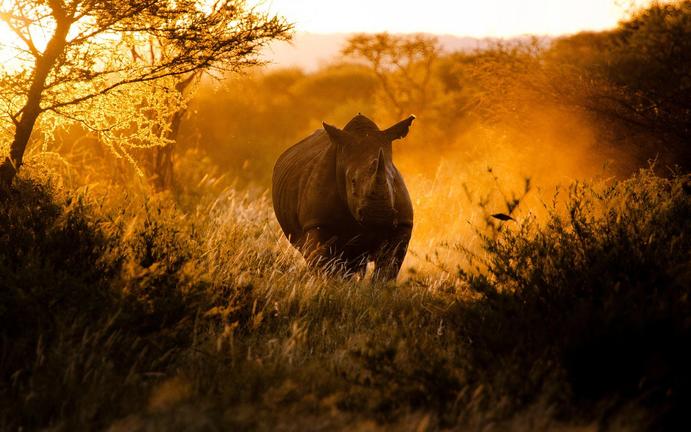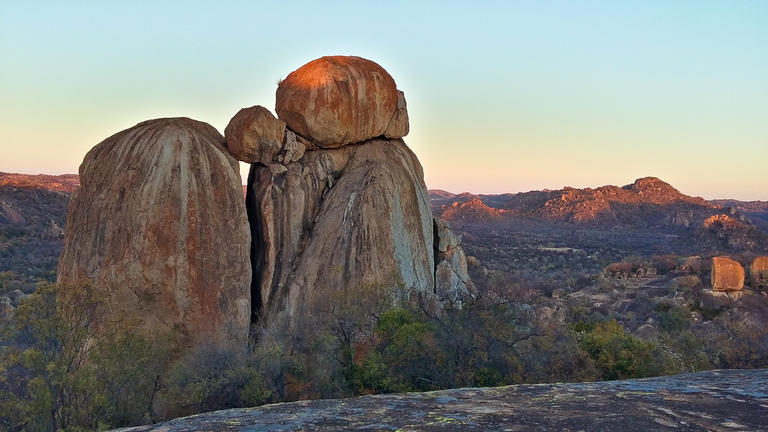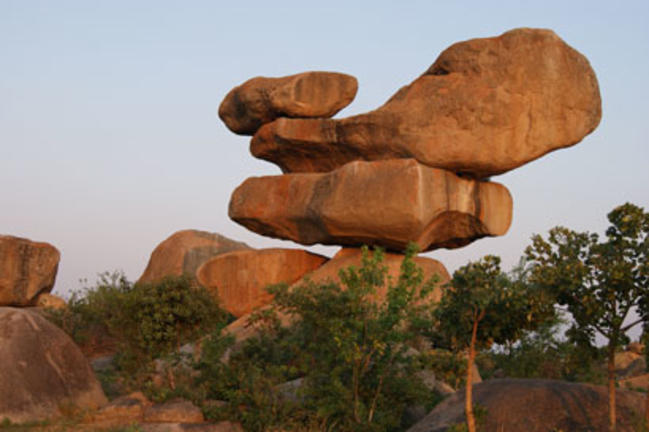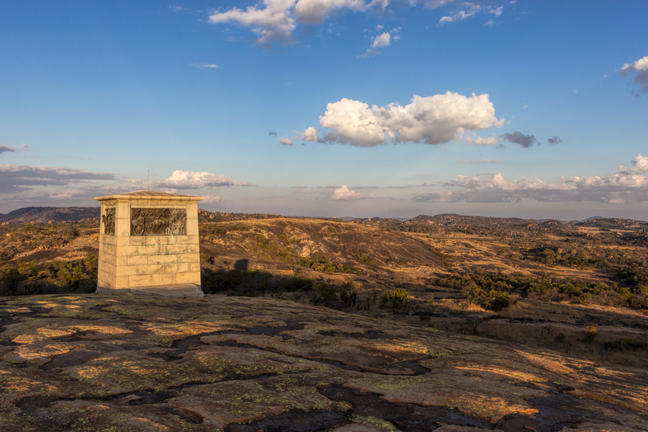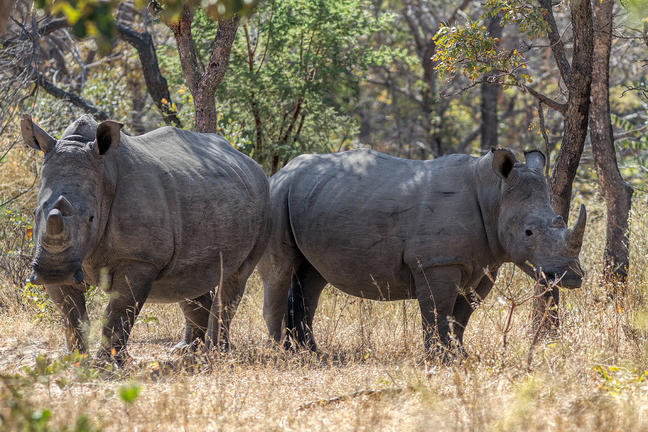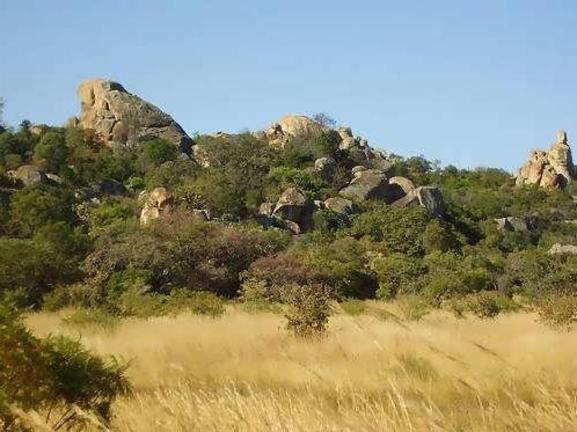34 km south of Bulawayo is the extraordinary Matobo Hills National Park that is situated in the 80 km long Matobo Hills. Formerly known as the Rhodes Matopos National Park, this 424 sq km national park is one of the more accessible and interesting areas in Zimbabwe.
The dramatic landscape of this park is made of huge piles of granite boulders with reddish hues balancing on top of each other at improbable angles. The 200-milliom years old Matobo Hills has range of domes, spires and balancing rocks resultant of years of erosion of a solid granite plateau.
The park was founded in 1953 but got the UNESCO World Heritage status in 2003 for having one of the largest concentrations of rock art in Southern Africa. These 3000 fine rock paintings are the legacy of the San (Bushmen) hunter-gatherers who lived here about 2000 years ago.
There are beautiful paintings of giraffe, eland, kudu and rhinos in the caves. The identification of a rhinoceros outline at the White Rhino Shelter gave the impetus to reintroducing the species to the park in the 1960s. There is a large population of white and black rhino in the park along with zebra, wildebeest, kudu, giraffe, sable, klipspringer, hyena, cheetah, hippo, leopard, common duiker, crocodiles, waterbuck, baboons and vervet monkeys.
Matobo was named by the Ndebele King Mzilikazi after the 'bald' rocks (amaTobom means 'bald heads' in Ndebele). He was buried in the hills just a short distance to from the park. The local people consider the site sacred and still use them for their traditional ceremonies. The summit of Malindizimu in the hills is also the place of burial of the imperialist Cecil John Rhodes who referred to it as 'World's View'. Also buried here are his right hand man and leader of the Jameson Raid Leander Starr Jameson and first Prime Minister of Rhodesia Charles Coghlan.
There is no public transport to the park but it is easy to drive to the park and around. From Bulawayo, the drive out of the city is via the Robert Mugabe Avenue.
There are private camps just outside the border of the park for accommodation and National Park chalets. The National Park is divided into different areas including the Lake Matopos, Recreational Park Area, Sandy Spruit and the Whovi Wilderness Area where the rhinos are. These areas of wilderness are truly spectacular with high biodiversity; there are over 200 species of trees, fairly rich bird-life especially black eagles, multi-coloured lizards, snakes and game. The caves housing the rock paintings are easily accessible and each has a unique setting in the granite wilderness.
Matobo Hills National Park is a safe walking terrain. With beautiful scenery around, it offers excellent hiking opportunities. Short walks include the Lakeside walk, Maleme Dam from Fish Eagle lodge, Mount Pomongwe from Maleme Camp, Maleme camp to Pomongwe cave while longer walks can be climbing mount Shumbashawa near Gordon Park, climbing Nyahwe mountain and hiking from Toghwana Dam to Inanke Cave. Most of the trails pass along the caves with rock paintings. A guide can accompany you from the Maleme Camp if required.
Other than hikes, visitors can also try their luck at tracking rhinos on a guided walking tour with an armed scout. With an ever-increasing population of black and white rhinos , you can more often than not spot them easily. Also a 4 WD can be taken to spot more wildlife at a leisurely pace.
